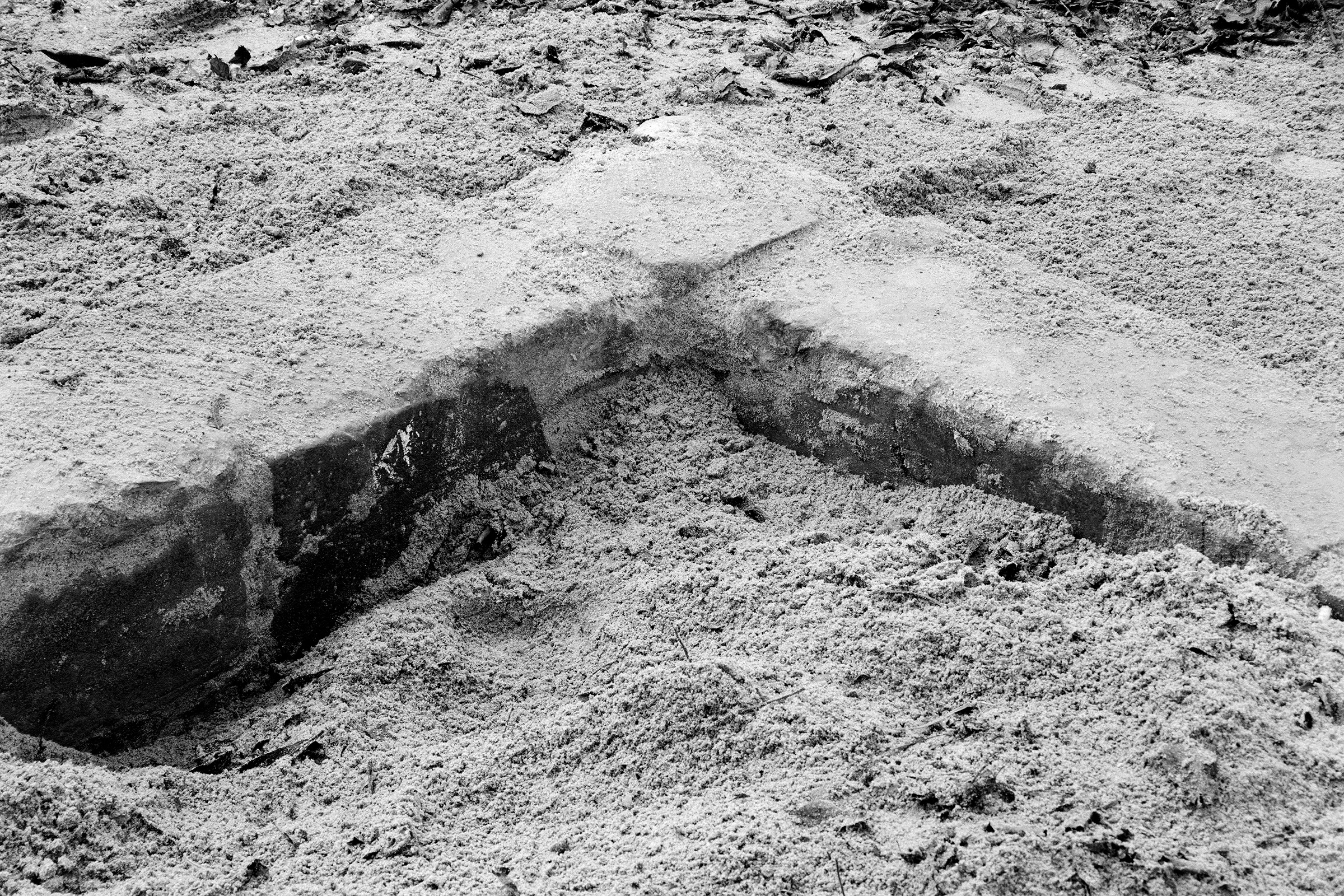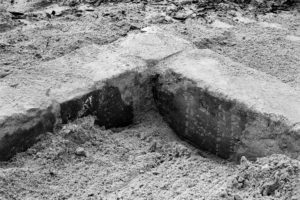Matzevot for Everyday Use Photographs by Łukasz Baksik
On view January 21- August 20, 2023, in the Janet Kohn Gallery, Second Floor.
Embellished with symbols and inscriptions, Jewish tombstones convey information about the life of people, families, and entire shtetls (towns). How many matzevot were there before World War II at the 1,200 Jewish cemeteries in Poland? This is a question, which nobody can answer today. The number may have reached a few hundred thousand or a few million.
More than four hundred Jewish cemeteries did not survive the war times. They were rearranged to provide sites for housing estates, sports fields, garbage dumps, or sand quarries. The sand mined from them to build houses was mixed with human remains. Only a hundred and fifty graveyards still have more than a hundred gravestones.
During World War II the Nazi occupants used matzevot to pave the courtyards of their new buildings, lay roads, or erect walls. Poles continued this infamous practice after the war. Matzevot was used, for instance, to line a water pool for firefighters, a railway embankment, or a riverbank. They were used as building materials for furnaces, flooring, and road curbs. A visitor will find hundreds of grinding wheels made of matzevot, many of them still bearing Hebrew inscriptions.



